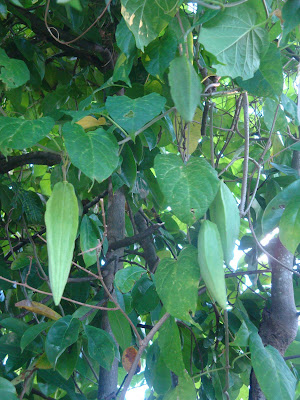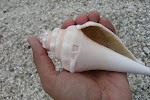It may surprise some of you that a non-drinker would have a blog entry about an alcoholic drink. Yes, this is all about tequila and no matter what preconceived notions you may have about it, I hope you give me a chance to explain my curiosity about this particular drink that inspired me to write and quite possibly do more.

I also hope you consider my geeky humor in all of this, by the way, and also consider that I have given up drinking since 1991. Although I may have had some lapses within 19 years and the occasional sip for a taste (usually wine), I've been a pretty straight arrow.
First off, I think I’ve always been somewhat of a highbrow when it comes to drinking. Call me a snob or whatever, but I honestly can’t stand the local love of Budweiser (or on Guam, Miller) for the mere fact that it is a drink, just to get you there per se: inebriated and forgetful of life’s troubles for a few hours.

A spin-off to this peeve is when I am off-island and there is a variety to choose from (from micro or local brews, or anything imported really) that are available, the people that I am with still go for the Bud. Product loyalty? Fear of the unknown? I don’t know. I do know that sticking with the familiar is boring! Have a little adventure! It’s a beer! Aren’t you curious? Wait a minute. I suppose I shouldn’t really judge since I am the one holding the Diet Pepsi.
 I don’t think I’ve really been a fan of beer (by the by, before giving up alcohol, I thought Coors was smoother than Bud or Miller). I liken this to my emulation of my father at the time, who actually preferred vodka. To my father, vodka was a drinking man’s drink: clear, strong, and pure.
I don’t think I’ve really been a fan of beer (by the by, before giving up alcohol, I thought Coors was smoother than Bud or Miller). I liken this to my emulation of my father at the time, who actually preferred vodka. To my father, vodka was a drinking man’s drink: clear, strong, and pure.
As a man of science, I am also intrigued by the process of making vodka. The distillation process has to be exact- 100% sterile or else the brew would go putrid (comparable to exacting laboratory conditions). So again, vodka was pure and classy if you will; from potatoes, rather than a weed-like vine. Plus, if you want to be able to chat with the Russian gals at the end of the bar about Tolstoy and Dostoyevsky, you aren’t going to impress her with an open can of Bud (trust the geek in me). Real men drink from a glass (at least, that’s how I take my soda anyways). "What about wine and wine tasting?" you may ask. Wine maybe a little too highbrow for me! Given that personal history, and science backing up my curiosity, I started wondering about Mexico's indigenous spirit, tequila.
HISTORYTequila is made from the agave plant, a desert succulent. Long before the Europeans came to America, the Aztec people fermented agave into a drink called
octli, or more popularly,
pluque. The drink we know today as tequila was actually produced in the 16th century near the town of Tequila (est. 1656). The Spaniards had run out of imported brandy and resorted to producing spirits via local means.
 BOTANY
BOTANY
Here are some introduced agave species at Tototville used as ornamentals. The broader leaves belong to
Agave americana while the thinner two-toned leaves belong to
Agave angustofolia.

Tequila is produced from Blue agave (
Agave tequilana) but I do not think we've got examples here on Saipan.

This towering beauty is the flower spike of the
Agave americana, also known as the "century plant" because it takes a long time for it to flower. Unfortunately, this agave is supposed to be a monocarp, meaning the plant will soon die after blossoming. You can see this beauty now at the San Jose intersection.
ANTHROPOLOGYTequila is one of a few drinks that has an actual ritual- it is known as “
tequila cruda” where you lick the back of your hand behind the index finger, pour some salt on the moisture,
slam down a
shot, suck on a lime wedge, feel the burn, wince and say loudly, “Aaaaaarrrrggggggghhhhhh” (also called the “lick, sip, suck ritual” ).
Tequila cruda is supposed to be for the uninitiated or newbie who may not be used to taking tequila straight or by itself.
 POP CULTURE
POP CULTUREI read an
article in Esquire Magazine that fueled more of my curiosity. According to the article, the authors observed (although totally subjective) that:
- Tequila tastes good, and different brands and types have complex flavors to be experienced (I am reminded of wine here).
- Quality tequilas do not lead to hangovers.
- Tequila is not a depressant.
- Quality tequila can be paired with most foods (Also like wine).
- Tequila can be a good gift.
- Tequila fosters "understanding and the forthright exchange of ideas".
TAXONOMYAnother science that intrigues me is the science of classification or Taxonomy, and tequila fits that bill as well:
- Tequila may have two unofficial but distinct Classes: lowland and highland. Lowland tequila, according to the article, comes from the plateaus of Guadelajara and generally tastes fruitier. Highland tequila are made from agaves grown in the volcanic uplands of Mexico. It is said that they taste brighter and more acidic, with hints of olive brine and green peppers.
- The official classifications are: Blanco (can be processed and may sit in any container up to 60 days before bottling). They can also be called blanco or "white" or plata or "silver"; Reposado or "rested" (aged for 60 days to a year in oak barrels); Añejo or "aged" or "vintage" (Aged 1 to 3 years in oak barrels); Extra Añejo or "extra or ultra aged" (aged more than 3 years sometimes with very old tequila mixed in.
 THE EXPERIMENT
THE EXPERIMENTIf I do get the courage to "let my hair down" to fuel my curiosity about tequila I would find a few examples (notice the grocery shelves and the non-lack of samples here). Then, I would sample them this way:
- Straight- this will lend to the purest sense of taste.
- With salt and lime or "tequila cruda"- the salt is supposed to deaden the "burn" and the lime is supposed to enhance the flavors.
- With sangrita or "little blood"- chilled mixture of OJ, lime juice, grenadine, & hot sauce. This is supposed to be the local's preferrence
- In a Paloma- a reposado with ice, lime plus rind, kosher salt, and grapefruit soda.
- In a Margarita- a blanco shaken with Cointreau, lime juice, ice and strained in a salt-rimed glass.
I would really like to conduct this experiment, to find out for myself what tequila is all about. Will the experiment have some altruistic objective to it? To go through the experiment so that I may report back my findings to you? Maybe I do just want to let my hair down.
I'll have to mull that over, sitting here with an open can of cool Diet Pepsi. Okay. I am a nerd. Whatever.
Ti napu.The Beachcomber
 DJ already impress me each time we hang out in nature as he absorbs most everything I tell him. He usually has a hundred questions about everything.
DJ already impress me each time we hang out in nature as he absorbs most everything I tell him. He usually has a hundred questions about everything. I know that the kid is smarter than me, because you see, I have a weakness in math. I love the concepts of geometry and physics, but I have to work on them for a long time in order for me to grasp them. DJ had to deal with measurements, ratios, fractions, and decimals. It was so impressive to see him get into the project and crunch the math like a bag of sembe (his favorite Japanese rice crackers). DJ got selected as 1 of the 3 that would represent his class for the entire school, but unfortunately did not place in the overall judging. I'm so proud of him though!
I know that the kid is smarter than me, because you see, I have a weakness in math. I love the concepts of geometry and physics, but I have to work on them for a long time in order for me to grasp them. DJ had to deal with measurements, ratios, fractions, and decimals. It was so impressive to see him get into the project and crunch the math like a bag of sembe (his favorite Japanese rice crackers). DJ got selected as 1 of the 3 that would represent his class for the entire school, but unfortunately did not place in the overall judging. I'm so proud of him though! 
 SAES' mascot is the gamsom. I often tell kids that I do not eat gamsom because it is such a shame to eat such a smart creature.
SAES' mascot is the gamsom. I often tell kids that I do not eat gamsom because it is such a shame to eat such a smart creature.



 I had to judge 12 projects with a 1 page (front & back) scoring sheet with 6 criteria, and 31 categories that include, "Does the project follow the scientific method?" to "Has the student acknowledged help received from others?". I didn't think that it would be so extensive! but I had fun anyway as I tried to judge fairly.
I had to judge 12 projects with a 1 page (front & back) scoring sheet with 6 criteria, and 31 categories that include, "Does the project follow the scientific method?" to "Has the student acknowledged help received from others?". I didn't think that it would be so extensive! but I had fun anyway as I tried to judge fairly.

 These kids has a lot of brain power I tell you. June, Ruth, Jiana, Mary Kay, Davina, Patty, Mae, Christina, Czarina, Jazmine, Tichina, Christian, John, Robert and Reyna Fe: you all did a great job! Thank you SAES!
These kids has a lot of brain power I tell you. June, Ruth, Jiana, Mary Kay, Davina, Patty, Mae, Christina, Czarina, Jazmine, Tichina, Christian, John, Robert and Reyna Fe: you all did a great job! Thank you SAES! My buddy, Hayden Lucas Scott is growing up too fast. He is already tech savvy already at the age of 1.5 years. He also likes the hook on Solja Boy's Churp (..."kiss me through the phone...I'll see you later on"...).
My buddy, Hayden Lucas Scott is growing up too fast. He is already tech savvy already at the age of 1.5 years. He also likes the hook on Solja Boy's Churp (..."kiss me through the phone...I'll see you later on"...).
 ...the importance of not only being smart but looking smart...
...the importance of not only being smart but looking smart... ... can identify his seasonal shorebirds by their foot prints...
... can identify his seasonal shorebirds by their foot prints... ... notes the composition of sand being an avid psammophile and naturalist.
... notes the composition of sand being an avid psammophile and naturalist. When one spends a lot of time in nature, one becomes a naturalist. Once a naturalist then one elevates one's self eventually to a naturist. It is the evolution of the man of science: The Renaissance Man!
When one spends a lot of time in nature, one becomes a naturalist. Once a naturalist then one elevates one's self eventually to a naturist. It is the evolution of the man of science: The Renaissance Man! I am sure he'll make me regret this when he is older. I love you, DJ and Hayden.
I am sure he'll make me regret this when he is older. I love you, DJ and Hayden.

 I also already have one sketched with a CNMI angle in which our people is represented by a hand readily handing over the islands of Tinian and Aguijan in a food bowl to the “big fish.” I hope it turns out good enough to start the gears working in our thoughts.
I also already have one sketched with a CNMI angle in which our people is represented by a hand readily handing over the islands of Tinian and Aguijan in a food bowl to the “big fish.” I hope it turns out good enough to start the gears working in our thoughts. 






















 Here is a picture of the collected flowers from that
Here is a picture of the collected flowers from that 


 The Mahatma- The Great Soul
The Mahatma- The Great Soul

 What footprints do we leave on this earth?
What footprints do we leave on this earth?


























